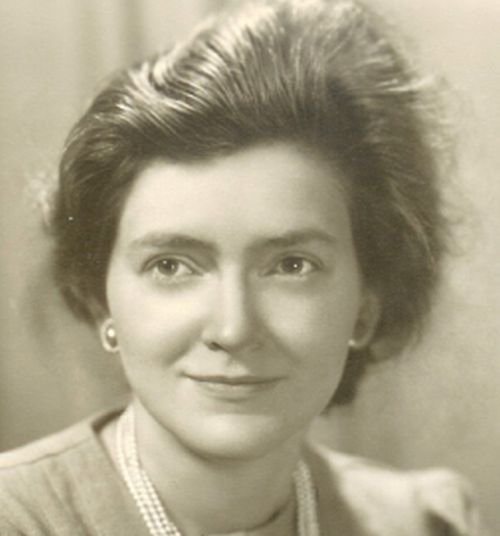Magnificent Mabinogi 4: creativity and canon

Dr Shân Morgain
Where do we draw the line between creative weaving of a tale as an individual, and extreme reworking/ wrecking? Canon (the original) and creativity can sit very far apart.
Evangeline Walton
Evangeline Walton’s influential novels were mostly composed 1940s but not successfully published until the Fantasy genre was recognised 1970s. These four imaginative sagas later combined as the Tetralogy.

Walton brings the Mabinogi vividly alive with sensitivity and mythic splendour. No wonder Stevie Nicks has long wanted to make a film/ TV series of the full Tetralogy.
But although Walton’s works are richly imaginative, she insists she does not contradict the canon (original tales). I’d agree the core is intact, though expanded with realistic detail, mythic marvels and philosophy.
WJG
William John Gruffydd (WJG) was a 20th century academic, a native Welshman writing at the same time as American Walton. WJG passionately wanted to salvage what he saw as tragically broken bits and pieces of myth.
He laboured to reveal an original ‘Celtic pantheon’ like the prestigious Greek gods of Olympus. He felt it necessary to rejig characters and plots an awful lot. He especially rewrote Pryderi, the supposedly central hero, to match Irish Mongàn.
Irish traditions were thought superior because untouched by Roman conquest, there was loads more material, and Irish independence was successfully splashing politics.
But WJG got carried away. His Rhiannon (1953) was an acid trip, nothing like the original Mabinogi.
He has been thoroughly debunked by a chorus of scholars ever since. Yet Rhiannon is still being quoted as a popular authority.
Radical Feminism
Feminists got terribly fed up with being treated with contempt by academics. Some slaved away to gain respect. Others rode their searing anger with courage into proud independence. Monique Wittig urged ‘remember./ Or, failing that, invent.’ (Les Guerillères, 1971)
Mary Daly: “As Muses of our own creation, Wonderlusters re-member our Original Powers. Unlike the frozen ‘philosophy’ that is packaged and stored within academic refrigerators.” (Pure Lust, 1986)
Glastonbury Goddess Temple
Kathy Jones founded the Glastonbury Goddess Temple, now internationally influential. She rightly criticised the Mabinogi (1980) as Boy’s Own stuff, so blazed her own trail. Ironically, new feminist scholars were just opening up Mabinogi women – but Kathy had turned her back.
The tale I know best is Rhiannon, and while I admire so much about the powerful Goddess Temple, I find their ‘Rhiannon’ painful.
They make her a sex goddess because her tale mentions May Eve. She is their icon for modern women to become ‘wild and free’ inspired by her horse.
Anyone less like a sex goddess than (original) Rhiannon is hard to imagine. She is a stateswoman, queenly ruler of the courts.
Her sexuality is only mentioned as her happy wedding night.
May Eve is mentioned only in her mothering tale, about Teyrnon’s mare. It’s nothing to do with sex like the modern Pagan festival of May Eve.
As for her special horse how can it inspire us to wild passion when its central nature is to solemnly pace slowly past those who watch.
It’s uncatchable, not a good look for ladies chasing orgasms.
Avalonian Rhiannon
Of course I respect anyone’s personal vision but I said in my Duwies Cymru (2008), a leader/ teacher’s vision has heavier responsibilities than the personal.
Since this ‘Rhiannon’ of the Glastonbury Goddess Temple is now established, I have politely recognised it as ‘Avalonian Rhiannon’. (See my comment here.) I will soon look at the Englishified Mabinogi developed from translations.
Conscientious use
Stormy, controversial times.
William Sullivan III called peacefully for ‘conscientious use’, accepting creative vision but asking for respect for the original, ancestral canon (2004)
Simon Rodway, my favourite professor, satirises the ‘Hollywood Celt’ (Aberystwyth, 2017).
Three Things There Are ….
John Davies back in 1993, roared a native Welsh diatribe in the tradition of the bards.
The title ‘Three Things There Are…’ comes from a Iolo Morganwg’s Triad (another who planted fantasies around 1800). That third thing ‘which is seldom heard’ is honesty in the mouth of an Englishman. John Davies leaves the insult neatly tucked away, unsaid.
‘Three Things’ was adopted as a course text on alternative religions by the Open University.
John Davies. 1993. ‘Three Things There Are’
“They are our dreams, not yours. Who are you to define us, still less to get your hands on our dreams?
“I do not wish to see the gaps filled in with ‘inspired’ or ‘channelled’ material which leaves too much scope to the imagination (to put it politely) of the author.
“I particularly do not wish to see a horrible bastardised travesty of my heritage making money for a few English and American teachers
“Stop it. Hands off. Enough is enough.”
…………………………………………………………………………………………………..
The ‘Magnificent Mabinogi’ title was first used by the playwright director Manon Eames for her famous staging, Aberystwyth Arts 2008; used here with her permission.
Magnificent Mabinogi Series – 1) Genius 2) Stories 3) Howlers 4) Tensions (above) NEXT 5) Landscape
Support our Nation today
For the price of a cup of coffee a month you can help us create an independent, not-for-profit, national news service for the people of Wales, by the people of Wales.





There will never be a Mabinogi movie because for the secondary reason that the work lacks a single coherent narrative drive. However, the primary reason is that it has the Irish as villains and Hollywood would never accept that.
The Mabinogi does have a coherent plot drive. It can be seen as a saga about three kindreds (families) and their interactions over several generations. The Dyfed kindred can be seen as morally positive, contrasting the Gwynned kindred as morally negative. The idea of the Mabinogi as ‘not coherent’ or muddled, belongs to an Anglocentric period approx 1870s – l970s. Then there was a big shift of opinion. I shall be giving more detail on this in November. I found your idea of reluctance to film Irish villainy interesting. So I asked google “movie Irish villain” and lots of results… Read more »